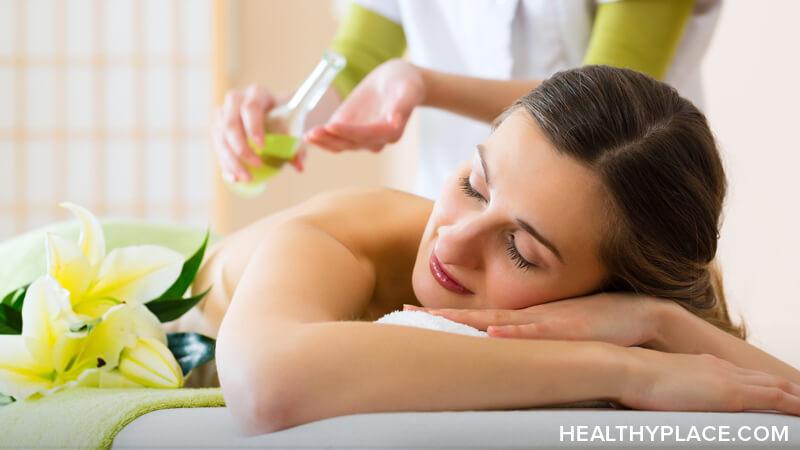Massage For Anxiety: Does It Work?

Massage for anxiety may just be the feel-good, anxiety-management technique that many of us have been seeking. Wouldn't it be wonderful to be able to use a tool that not only reduced anxiety but was pleasurable, too? Massage can be relaxing, but is that relaxation enough to reduce anxiety? Here's a look at massage for anxiety so you can decide if you want to add this technique to your anxiety-reducing toolbox.
Massage is an approach to health (physical and mental), wellness, and simply being. Several types of massage exist; here, the term is used broadly and can apply to a variety of massage styles. A purpose of massage is to induce relaxation through touch and human connection. As you relax, you can let go of things that aren't serving you well, such as anxiety and anxious thoughts. We all hold tension and anxiety in our bodies and massage helps to release that tension from our muscles and release you from anxiety.
Benefits of Massage for Anxiety
Studies have shown that massage does help reduce anxiety. and anxiety disorders.1 Massage is an approach to anxiety reduction that disrupts anxious thoughts and emotions. It can neutralize worries and fears that disrupt life but aren't diagnosable as an anxiety disorder. Additionally, massage has been found to reduce the symptoms of generalized anxiety disorder (GAD)1 and panic disorder (PD).2
Massage can create anxiety relief in numerous ways, such as:
- Releasing tension and toxins that are stored in muscles throughout the body
- Decreasing the flight-or-flight response that, in anxiety disorders like GAD and PD, is almost always on high alert
- Lowering blood pressure and heart rate
- Reducing the production of the stress hormone cortisol
- Increasing the production and release of feel-good hormones known as endorphins
- Calming the nerves, nervous systems
- Grounding and centering you (and your thoughts and emotions)
- Inducing full mind-body relaxation
- Promoting mindfulness
- Naturally facilitating slow, deep breathing
- Increasing wellbeing to replace anxiety
Massage, with its touch and combination of gentle sensory stimulation and rhythmic soothing, connects people. This touch and connection allow the above benefits to happen.
Elements that Help Massage Work for Anxiety
One of the reasons that massage works is because it speaks to us on a fundamental level. Skin to skin contact is healing. Essential oils both inhaled and applied to the skin reach the brain and create positive changes. Many times, massage therapists use soft music or nature sounds that relax and encourage mindful attention, diverting thoughts away from anxiety and into the present moment. Brain and body come into a synchronized rhythm that is powerful and can shut out anxiety.
If you decide to try massage for anxiety, you might find that not only is your anxiety, GAD, or PD better, but it's been replaced by inner peace, calm, and wellbeing.
Have you tried massage? Did it affect your anxiety? Feel free to share your experiences in the comments.
Sources
- Bushak, Lecia. Therapeutic Massage for Anxiety: How Touch Therapy Improves Mental Health. Medical Daily, 2016.
- Star, Katharina PhD. Therapeutic Massage for Anxiety and Panic Disorder. Verywell mind, 2018.
APA Reference
Peterson, T.
(2019, January 24). Massage For Anxiety: Does It Work? , HealthyPlace. Retrieved
on 2026, January 20 from https://www.healthyplace.com/blogs/anxiety-schmanxiety/2019/1/massage-for-anxiety-does-it-work
Author: Tanya J. Peterson, MS, NCC, DAIS
I think this is a wonderful idea, and truly holds so much healing. For those that think of the energetic body, the connection between mind and body is a very real one. Doing something like massage can have numerous practical benefits for anxiety. Actually helping to release tension stored in muscles and tissues. Pairing a physical release with a mental one can have great outcomes.
Hi Lizanne,
I love your statement about pairing physical and mental release. Excellent point and another indication of the power of the mind-body connection. Thank you for your value-added comments!